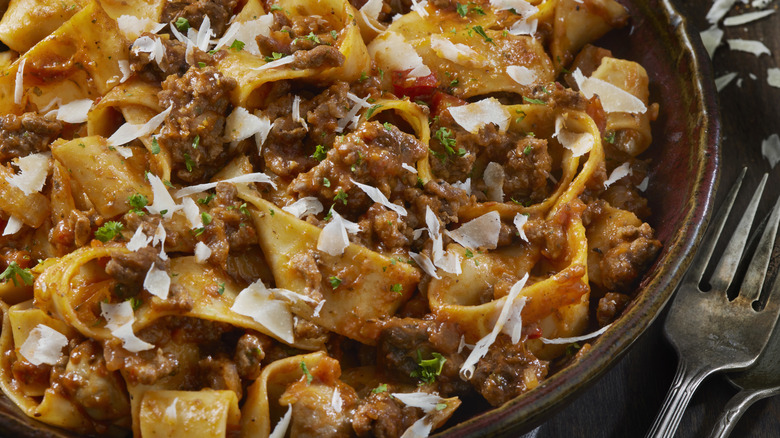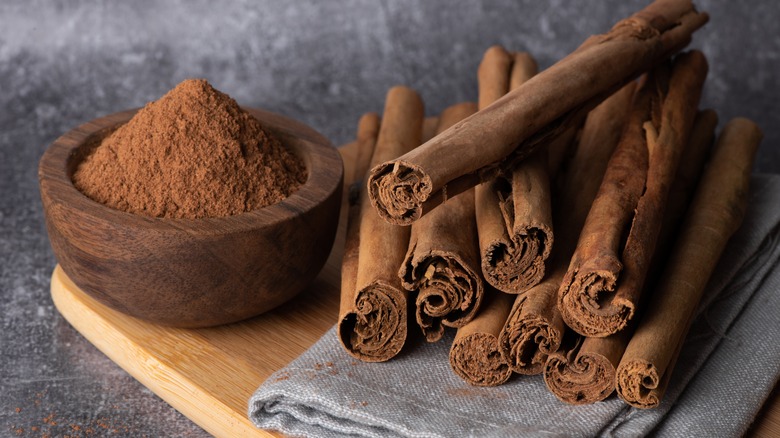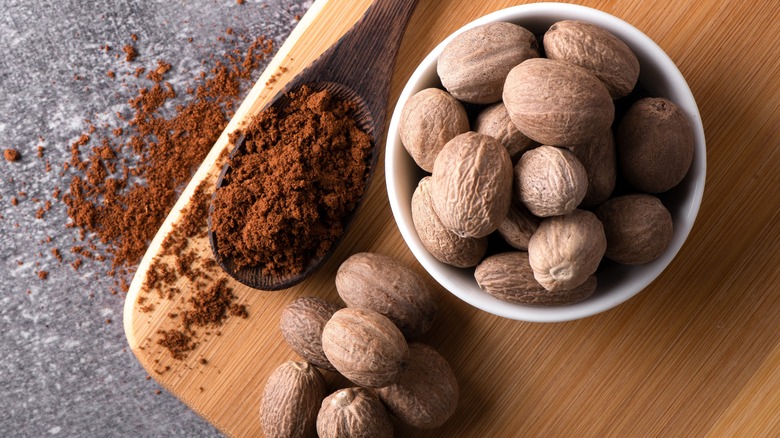Seriously Upgrade Your Bolognese Sauce With An Unexpected Spice
Bolognese is what's known as a ragù: A slow-cooked Italian meat sauce often served on top of pasta. This variety of ragù is a little different from the bright red, tomato-heavy sauces you may see in jars at grocery stores; a traditional Bolognese recipe contains a medley of ingredients, including broth, milk, wine, and various spices. In a simple sauce like this, each flavor plays an important role; so instead of tossing the usual suspects from the spice rack into your sauce, consider adding something a little less expected for depth of flavor: cinnamon.
Cinnamon may not be the most common addition to Bolognese sauce, but it's a match that certainly makes sense. It's warming, slightly sweet, slightly sharp, and has a hint of heat without being overly hot like a chili pepper. This medley of unique flavors makes cinnamon a more versatile spice than you might imagine; it's just as wonderful paired with rich meat dishes as it is in an apple pie or sprinkled in hot chocolate, and it is a fantastic accompaniment to the rich flavors of a Bolognese.
Ground cinnamon, or cinnamon sticks?
If you want to use cinnamon in your Bolognese sauce, you first have to decide what variety of cinnamon to use — whole sticks, or ground. Although both are from the same plant, they each have different uses and impart different levels of flavor to whatever they're used in.
Cinnamon sticks and ground cinnamon both come from the dried bark of the cinnamon tree; ground cinnamon is simply that bark ground up into a powder. Sticks of cinnamon are typically used to infuse liquids from stocks to beverages such as homemade mulled cider by steeping the sticks in the liquid, which are then removed and discarded. Cinnamon sticks are also used as a garnish in drinks and cocktails made with cinnamon simple syrup. Ground cinnamon, on the other hand, covers a greater surface area and dissolves directly into the food, giving dishes a more intense, immediate flavor.
For Bolognese, cinnamon sticks are often used because of the sauce's typically long cooking time; steep the sticks as the sauce simmers, then remove them before serving. If ground cinnamon is all you have, though, you can use that as well — just ¼ teaspoon is usually all you need.
Add more spices for extra depth
While cinnamon adds a rich depth of flavor to Bolognese on its own, the spices don't have to stop there. To build upon the warm flavors imparted by the cinnamon, try adding in a couple of other spices that historically play well with this earthy addition: clove and nutmeg.
Nutmeg is a fairly common Bolognese addition in its own right; nutty, sweet, and a little earthy, it's a perfect pair with the flavors of cinnamon. When it comes to this spice, freshly grated is best; pre-ground nutmeg has a much more muted flavor and won't come through as strongly in the sauce.
Cloves make another excellent addition to Bolognese sauce, adding more of that characteristic "hot" spice flavor kick. Using whole cloves is preferable to ground cloves; just be careful when cooking with them, as leaving whole pieces in your sauce can pose a choking hazard. Putting them in an herb sachet to stew can help prevent disaster; you can remove the sachet after steeping with little fuss, leaving your Bolognese spiced and your mouth safe.


